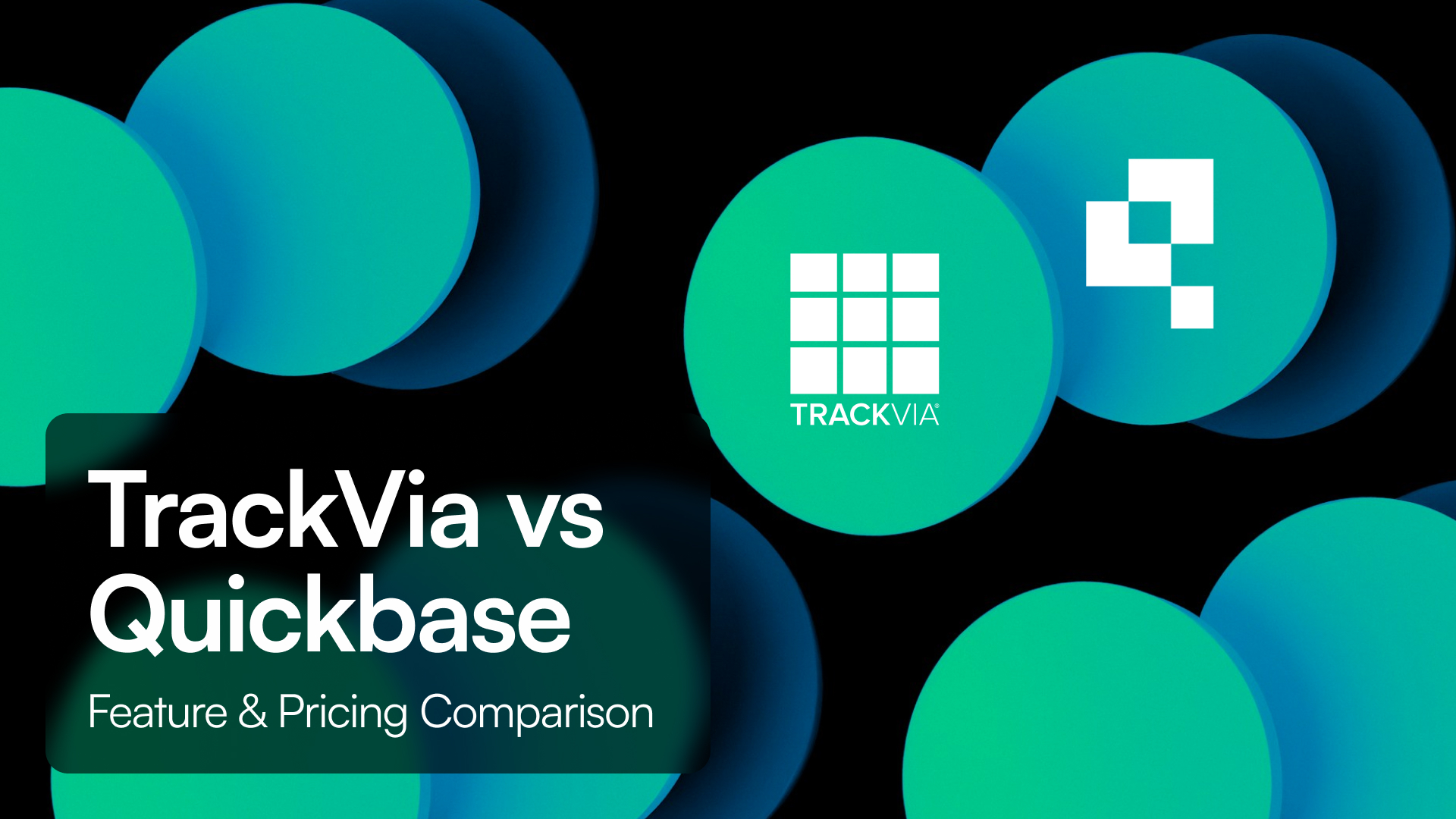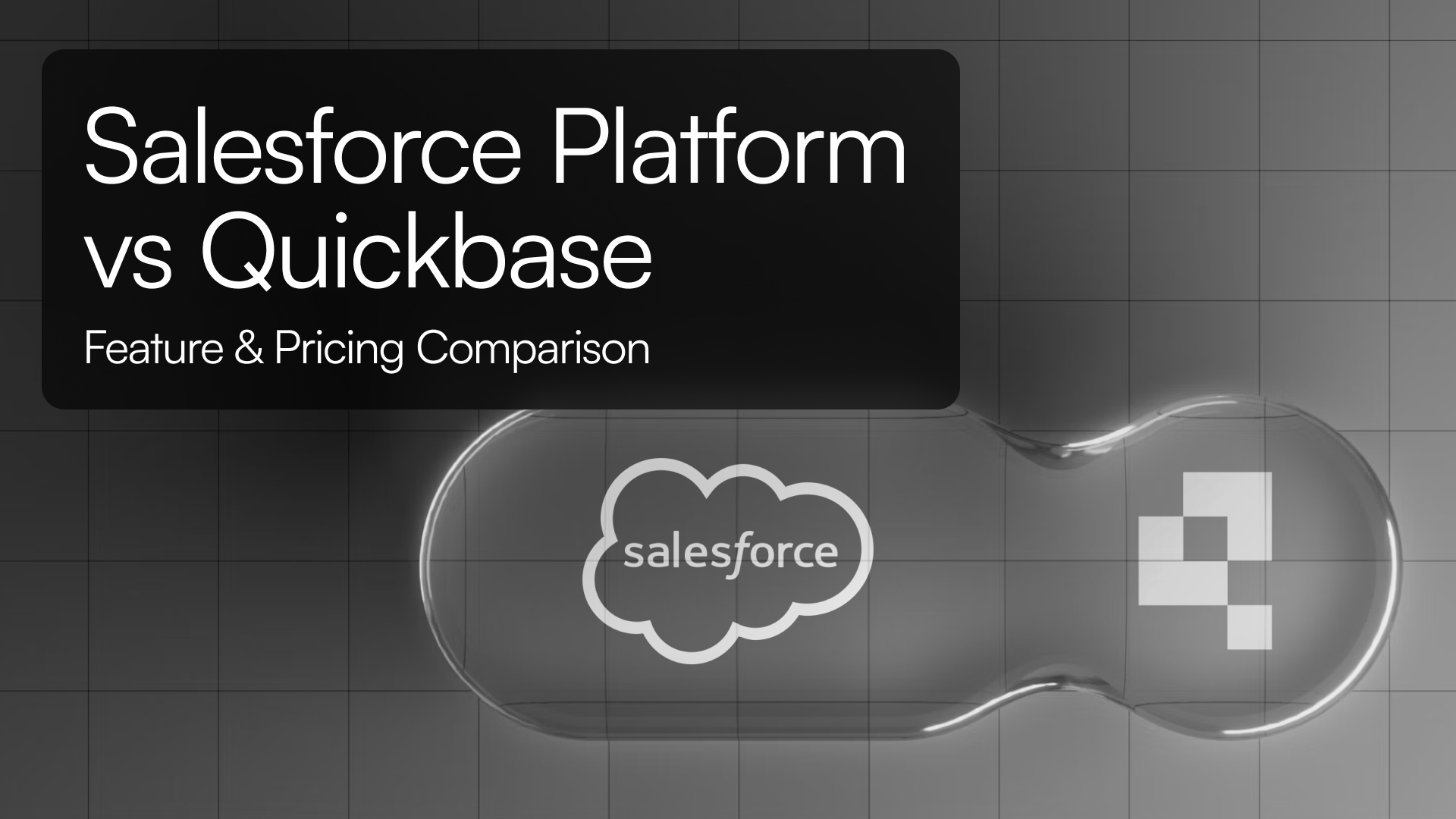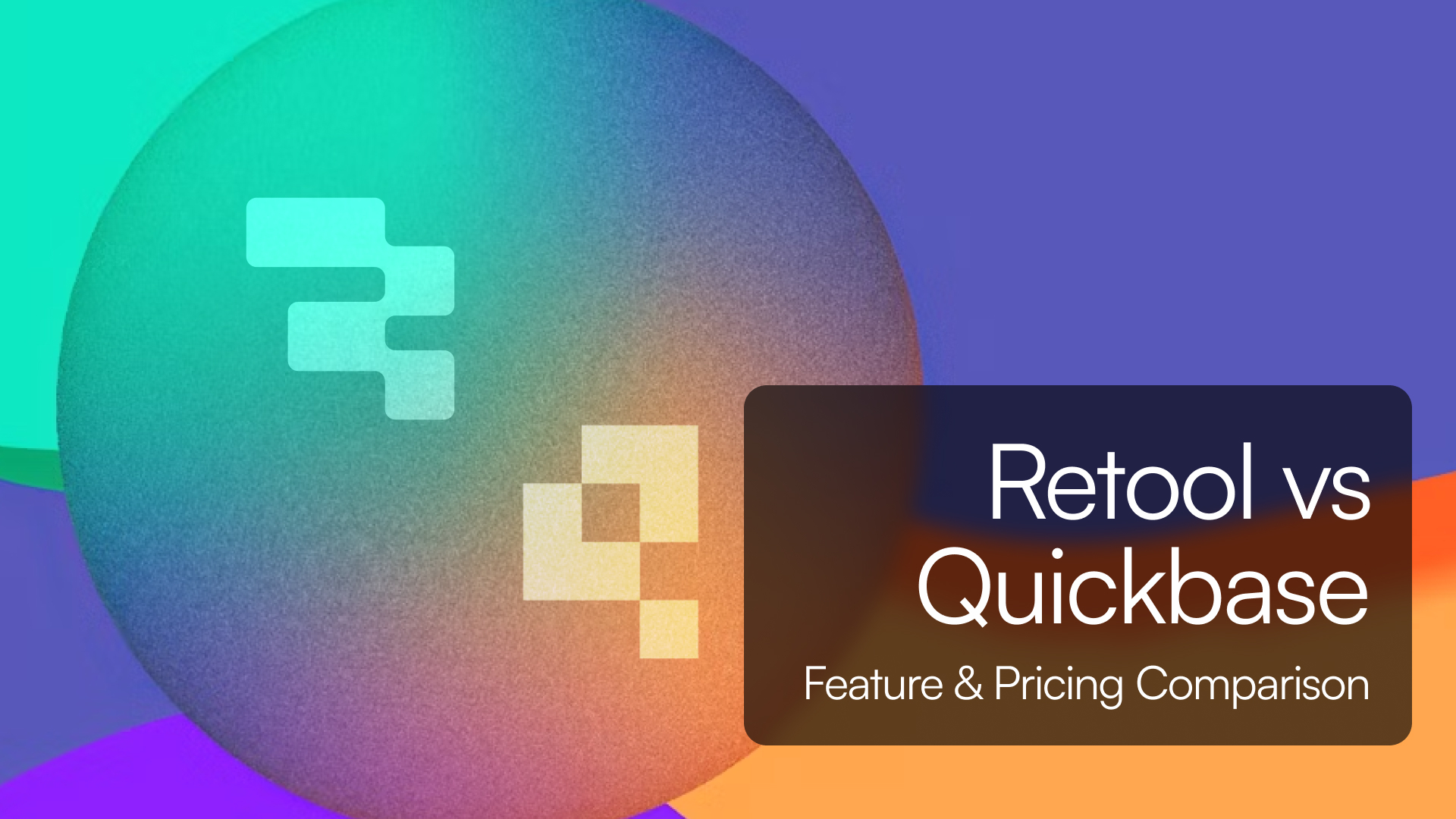Build Complete Solutions, Beyond the Surface.
Introduction
Tadabase and Quickbase stand out as powerful tools for businesses looking to build custom solutions. But while both platforms share the goal of simplifying development, their approaches differ significantly.
Quickbase operates as a layer above the database, providing pre-built tools for quick deployment. In contrast, Tadabase gives you the freedom to build from the ground up, offering unparalleled flexibility, scalability, and advanced customization—even if you’re not a developer.
The Paradigm Shift: Tadabase's methodology mirrors how a developer would approach app building. You begin by creating your database structure, then design pages, and finally, add controls such as rules and security. This approach ensures you have the flexibility and scalability to build advanced solutions, even if you're not a developer. In contrast, Quickbase combines database and interface tightly, which allows for quicker starts but often leads to limitations as your app grows.
This post offers a detailed comparison of Tadabase and Quickbase, focusing on their core differences, practical applications, and the type of user each platform serves best.
Watch the Tadabase vs Quickbase Comparison
Core Differences
1. Building Methodology
Tadabase’s Developer-Like Approach vs. Quickbase’s Layered Model
Tadabase:
Tadabase gives you a blank canvas, where you first create your database structure, define relationships, and ensure data integrity. From there, you build pages to display and interact with the data. This modular approach lets you add advanced features like rules, security settings, and plugins, giving you complete control over your app.
Example: A logistics company can design a fleet management tool by structuring data for routes, vehicles, and drivers before creating interactive dashboards for real-time updates.
Quickbase:
Quickbase marries the database and interface closely together, which allows for faster initial setup but limits flexibility as your app grows. You’re tied to the pre-configured framework, which can make adding advanced features or custom integrations more challenging.
Example: A small business could deploy a basic CRM in Quickbase using templates, but modifying it to include custom reporting or integrations may require workarounds or external tools.
2. Database Control and Relationships
Tadabase:
At its core, Tadabase emphasizes precision. You define every relationship, field, and condition within your database. This is ideal for businesses with interconnected workflows and complex data needs.
Quickbase:
While Quickbase simplifies database management with pre-configured options, the tight coupling with the interface limits how much control you have over the data structure.
3. Customization of Logic and Automation
Tadabase:
The developer-like methodology of Tadabase allows you to create intricate workflows. From multi-step processes to API integrations, Tadabase makes it easy to automate even the most complex scenarios.
Quickbase:
Quickbase uses a rules-based approach for simple automations, which is suitable for basic tasks but may require workarounds for more complex workflows.
4. Dashboards and Reports
Tadabase:
Tadabase’s flexibility extends to dashboards, letting you design role-specific views, create interactive charts, and embed third-party data sources.
Quickbase:
Quickbase offers out-of-the-box dashboards, which are functional but may not accommodate unique visualization needs.
5. Scalability and Performance
Tadabase:
Built for scale, Tadabase can handle large datasets, high user volumes, and complex applications without performance compromises.
Quickbase:
Quickbase works well for small to medium-sized projects but may encounter limitations with scaling and customizations.
The Tadabase Advantage
Developer-Like Flexibility Without the Complexity
Tadabase’s approach to app building is akin to how a developer would tackle a project. By starting with a well-defined database structure and then layering pages, rules, and security on top, you gain unparalleled flexibility. This methodology ensures you can easily incorporate advanced features like:
- Plugins for added functionality.
- Integrations with external APIs.
- Custom Callbacks to tailor workflows.
- Advanced Security to protect data.
In contrast, Quickbase’s tightly coupled database and interface model might make getting started faster, but it often leads to limitations. For businesses seeking long-term scalability and customization, Tadabase provides a more robust foundation.
When to Choose Tadabase Over Quickbase
You Want Full Control: Tadabase’s modular methodology mirrors how a developer would build an app, offering flexibility at every step.
You Need Advanced Customization: For unique features and integrations, Tadabase’s developer-like approach delivers unmatched flexibility.
You’re Focused on Scalability: Tadabase scales seamlessly, handling growing datasets and user demands without performance degradation.
For a detailed breakdown of Tadabase as a Quickbase alternative, check out Tadabase’s comparison page.
Comparing a Few Example Use Cases
Building a Custom CRM
Quickbase: Start with a pre-built CRM template and add basic fields and rules. This approach works well for simple setups but may require additional tools or workarounds for deeper customization.
Tadabase: Create a fully custom CRM with advanced integrations, role-based access, and personalized dashboards for teams like sales, marketing, and customer support. Tadabase’s modular approach ensures every component aligns with your business processes, from database structure to page design. Try the Custom CRM template now.
Automating Processes
Quickbase: Automate straightforward tasks like updating statuses or sending notifications. This rules-based system is quick to set up but can become cumbersome for more intricate workflows.
Tadabase: Build multi-step workflows that trigger conditionally, integrate seamlessly with external APIs, and update related datasets automatically. For example, an e-commerce business could manage inventory, notify warehouse staff, and update customer emails in one streamlined process. Explore automation capabilities.
Managing Enterprise Data
Quickbase: Effective for small-scale data management with basic relational tables, but as datasets grow, the tight coupling between database and interface can become restrictive.
Tadabase: Scales effortlessly to handle large datasets with complex relationships, advanced filtering, and role-based data access. For example, a global manufacturing company could manage inventory across multiple facilities, track millions of data points, and visualize data through custom dashboards. Check out Tadabase for enterprises.
Conclusion
Choosing between Tadabase and Quickbase ultimately depends on your needs. Quickbase’s tightly coupled approach may work for simpler projects or quick deployments. But if you value flexibility, scalability, and the ability to create truly custom solutions, Tadabase is the clear choice.
Tadabase’s developer-like methodology ensures that you’re not limited by pre-built templates or rigid frameworks. Whether you’re building a simple app or a complex enterprise solution, Tadabase offers the tools and flexibility to bring your vision to life—no coding required.
For those ready to build programs from scratch without limitations, Tadabase is the ideal platform.
Frequently Asked Questions
Q: What is Quickbase?
A: Quickbase is a low-code development platform designed to help businesses build custom applications. It operates as a layer above your database, offering pre-configured tools like dashboards, rules, and reporting to simplify app creation. While it enables quick deployment, its tightly coupled database and interface can limit flexibility for more complex or scalable applications.
Q: What are the top Quickbase alternatives?
A: If you’re looking for alternatives to Quickbase, here are some top options:
- Tadabase: Ideal for businesses that need developer-like flexibility, advanced customization, and scalability.
- Airtable: Suitable for smaller projects that rely on spreadsheet-like functionality. Compare
- Zoho Creator: A good choice for small businesses looking for a suite of pre-integrated tools. Compare
- OutSystems: Great for enterprise-level app development but may require technical expertise.
- Microsoft Power Apps: Best for organizations already using Microsoft’s ecosystem.
For a detailed breakdown, visit Tadabase’s Quickbase Alternatives page.
Q: How does Tadabase’s approach differ from Quickbase?
A: Tadabase focuses on flexibility and scalability by separating database management, page design, and workflow creation—similar to how developers traditionally build apps. Quickbase combines these elements into a single interface for faster setup but often results in limitations for advanced use cases. Tadabase’s approach ensures you’re not constrained as your app grows or your needs evolve.
Q: Can Tadabase be used by non-developers?
A: Absolutely. While Tadabase’s methodology mirrors how developers approach app building, its user-friendly interface ensures non-developers can create powerful applications. The platform includes extensive documentation, tutorials, and pre-built templates to help users of all skill levels get started. Read the Tadabase approach to no-code.
Q: How scalable is Tadabase compared to Quickbase?
A: Tadabase is designed for scalability. It can handle large datasets, high user volumes, and complex workflows without compromising performance. Quickbase works well for small to medium-sized projects but may face challenges as data and application complexity grow.
Q: Which industries benefit most from Tadabase?
A: Tadabase serves a wide range of industries, including:
- Logistics: Fleet management, route optimization, and delivery tracking. Explore logistics solutions.
- Healthcare: Patient records, appointment scheduling, and billing. Explore healthcare solutions.
- Manufacturing: Inventory management, production tracking, and quality control.
- Finance: Custom dashboards, client reporting, and compliance tracking. Explore finance solutions.
And so much more... Its flexibility allows it to adapt to virtually any industry or use case.
Q: Does Tadabase integrate with external tools and APIs?
A: Yes, Tadabase offers robust integration capabilities. You can connect to external APIs, use webhooks, and leverage plugins to extend functionality. Whether you need to integrate with CRM systems, accounting software, or custom APIs, Tadabase makes it easy.
Q: Is Tadabase more cost-effective than Quickbase?
A: Yes. Tadabase offers transparent pricing without hidden costs. Its flexible plans ensure you pay only for what you need, and the ability to scale without limitations makes it a budget-friendly option for growing businesses. Check out Tadabase pricing and plans here.







